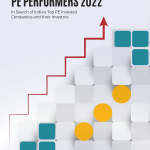
Google, Ford, Hubspot, Microsoft and Amazon are among several companies that shifted to the hybrid work models permanently. A few others have work-from-home the de facto option for some sections of their employees. Both these instances indicate that remote work is here to stay forever. While that’s good news, it may not bring a smile to the IT administrators’ faces, given the new security challenges that they’ve to track without actually stepping on anyone’s toes in matters of privacy.
Having said so, tracking employee productivity appears to be a constant, be it at the workplace or while operating from home. This prerequisite of the workplace brings its own challenges, given that enterprises report billions of dollars worth of lost productivity. At the workplace, employee time is regulated through breaks so that social distractions do not harm overall output. However, once this shifts over to the home, worker productivity could involve use of customized monitoring tools and AI-drive performance analytics. Some of them include time & attendance software, biometric technology, video surveillance, and also GPS fleet management software for drivers.
Remote work privacy pitfalls
And therein lies the problem. In using such employee monitoring methods, tech admins must seek a balance between using them for productivity management while being cognizant of employee privacy. The more that technology becomeS pervasive, the bigger would be the privacy challenges. And the reasons are not far to see. New monitoring tools could potentially result in unwarranted consequences, some of which are listed below:
- Leaking personal and family information to an organization – For employees working from home there are high chances of overlaps between work and personal activities – this tends to affect both the parties. On the one hand, personal information might get shared with the organization or clients, while on the other, employees may inadvertently share sensitive business data to personal contacts, resulting in a breach of corporate privacy.
- Exposing private living spaces through video usage – Videos became a lifesaver when the Covid-19 pandemic had struck. However, its usage also exposes personal space of an employee to colleagues, often creating privacy anxieties. A blurred background may do the trick but trust technology to mess-up when least expected. When workers without a dedicated office area try to maintain professional decorum, webcams can give views of their homes and family members in the background.
- Productivity versus engagement metrics – The core issue here is credibility, and it is reasonable to some extent considering the unlimited options for frivolous online activities that are available to us today. So managers may equate silent spells of online engagement to be unproductive. Unified communications (UC) platforms help address this problem to some extent as they keep all voice, video and data-sharing applications on a single portal. Even if activities on UC reduce sporadically, it does not imply that workers are less productive – they may be speaking to customers on mobile or may be trying to organize their thoughts for writing a report.
The best option is to over-communicate on privacy
Constant monitoring can make employees feel that their company does not trust them or fails to foster a culture of ethical behavior. Worse still, it may impact their productivity, happiness at work, and may lead to attrition. To avoid the negative effects of monitoring, an organization must convey its purpose clearly to employees. Here are some of the methods they can use in this regard:
- Announce employee monitoring policies clearly – Communicate all procedures and the reasons thereof clearly to new employees during their induction. Also notify the existing workforce on any changes in monitoring policies. Install signage about CCTV surveillance. What’s more, share the data collected about employees individually with them when required, and allow them to challenge its interpretations.
- Track only what is required – Using GPS to track fleets and telematics on company vehicles is a good practice to improve operational efficiency and prioritize safety. However, its use to track company laptops and phones is not recommended as it enables employers to check on employees’ activities even when they are off work.
- Assess AI algorithms – Review and audit AI algorithms to identify and remove potential biases, ensuring that monitoring methods are fair.
- Involve employees in decision making – Solicit employee feedback and suggestions on monitoring practices, and consider their apprehensions while taking decisions on the use of AI and other tech in the workplace.
In conclusion…
It is always worth keeping in mind that technology may have simplified workforce monitoring and enhanced both productivity and security, but the concerns around privacy are a constant. Companies that use AI to check on their employees’ contribution to business operations should balance its capabilities with ethical considerations – this is essential for building an efficient, safe and transparent work environment wherein everyone’s privacy rights are respected, whether they work from office or home. They should also consider the nature and scope of data collected to maximize the utility of technologies used, and mitigate any potential downside. In addition, to abide by the privacy laws across global regions, legal advisors must be consulted before implementing monitoring policies.


